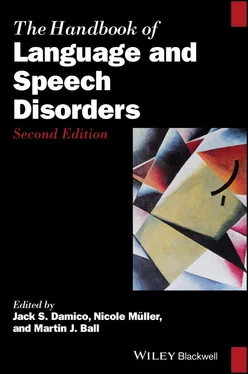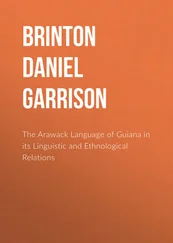While the American Psychiatric Association's Diagnostic and Statistical Manual (DSM) and the World Health Organization's International Classification of Diseases (ICD) are often considered as standards for objectivity in medical and behavioral diagnoses—tools that employ rigid standards and objective criteria that are above reproach—many diagnostic categories or labels that are listed and described in the DSM or ICD do not employ objective criteria, nor are they indicators of objective conditions. Rather, like all diagnostic labels, they are social constructions influenced by various social and cultural factors (Coles, 1987; Conrad, 2009; Cooksey & Brown, 1998; Elliott & Grigorenko, 2014; Gernsbacher, Dawson, & Goldsmith, 2005; Kroska & Harkness, 2008; Kutchins & Kirk, 1997; Reid et al., 1994; Reid & Katsiyannis, 1995; Rutter & Tuma, 1988; Searight & McLaren, 1998). The DSM is a document that has been described as a mechanism that can be used to “secure psychiatric turf” (Kirk & Kutchins, 1992). Numerous researchers have suggested that the DSM is a way of sanctioning the diagnostic categories by providing apparent objectivity by using the socially constructed authoritative voice of psychiatry. What is lost in what Cooksey and Brown referred to as this “diagnostic project” is the reality that the DSM (and ICD) are based upon the same variables that are involved in all social constructions of institutional touchstones: sociocultural values and assumptions, political compromise, scientific evidence, and material for insurance forms.
The subjective and fluid nature of many of these diagnostic categories has been widely discussed in the literature with reference to various diagnostic categories (e.g., Aspel, Willis, & Faust, 1998; Augustine & Damico, 1995; Barsky & Boros, 1995; Broom & Woodward, 1996; Brown, 1995; Conrad, 2009; Cooksey & Brown, 1998; Elliott & Grigorenko, 2014; Jensen, Mrazek, & Knapp, 1997; Kaufmann, Hallahan, & Lloyd, 1998; Kavale & Forness, 1998, 2000; Kirk & Kutchins, 1992; Kutchins & Kirk, 1997; Marshall, 1996; Prior & Sanson, 1986; Reid et al., 1994; Reid & Katsiyannis, 1995; Rutter & Tuma, 1988; Scott, 1990). Given recent claims for significant increases in the incidence of autism in the United States, an example for how social construction influences the process of legitimatization in autism and how this very process creates the perception of an “autism epidemic” is especially illustrative (Baker, 2008; Gernsbacher et al., 2005).
Gernsbacher et al. (2005) convincingly argue that the “autism epidemic” does not really exist. Rather they discuss the role that the DSM and societal influences play in the increased incidence of autism, owing to the labeling process and the changes in the DSM diagnostic criteria due to various socially oriented factors in different editions of this major diagnostic manual. For example, in the DSM‐III a diagnosis of autism required satisfying six mandatory criteria (American Psychiatric Association [APA], 1980), but in DSM‐IV (APA, 1994) the diagnosis is fulfilled by meeting only 50% of 16 optional criteria. Further, the criteria themselves were made more subjective and inclusive by changes in the phrasing employed. In the DSM‐III one of the criteria was manifestation of “a pervasive lack of responsiveness to other people” (1980, p. 89) while the closest criterion to this in the DSM‐IV is that an individual must demonstrate “a lack of spontaneous seeking to share … achievements with other people (1994, p. 70). Similarly, the 1980 mandatory criteria of “gross deficits in language development” and “bizarre responses to various aspects of the environment” were changed to “difficulty sustaining a conversation” and “persistent preoccupation with parts of objects” respectively. Finally, the numbers of diagnostic categories for autism were changed from two in DSM‐III (infantile autism and childhood onset pervasive developmental disorders) to five in DSM‐IV‐R (autistic disorder, pervasive developmental disorder not otherwise specified, childhood disintegrative disorder, Rhett syndrome, Asperger’s disorder). In the DSM‐5 (American Psychiatric Association, 2013), the category of Asperger’s disorder, always a bit controversial given its subclinical nature, was even modified and taken out of the Pervasive Developmental Disorder category (e.g., Matson, Kozlowski, Hattier, Horovitz, & Sipes, 2012; Waterhouse, 2013; Waterhouse & Gillberg, 2014).
Given these changes to the diagnostic criteria between DSM‐III and DSM‐IV‐R, it is not surprising that there appear to be many more diagnoses of autism over the time span discussed. Indeed, the new and milder categories or variants of autism appear to account for 75% of the new diagnoses (Chakrabarti & Fombonne, 2001), and when other socially driven changes (e.g., establishment of threshold and sub‐threshold symptoms, a decision to co‐diagnose, attempts to identify children at progressively younger ages) are also considered, it is no wonder there appear to be significant increases in incidence that necessitated the change in categories in DSM‐5. The point, however, is that led by advocacy groups championing more relaxed and inclusive criteria, the reality of autism has changed according to social considerations. Discussions on the role of social variables in reconceptualizing autism, its causes, and its incidence may be found in the work of various researchers in the history and epidemiology of autism (e.g., Baker, 2008; Fombonne, 2003; Gernsbacher et al., 2005; Silverman, 2004; Waterhouse, 2013; Worley & Matson, 2012).
Based upon such mechanisms of influence and the actual individuals with sufficient societal power to both label and make the consequences of the label operational, the diagnostic process nearly always produces a label that is attached as an indication of some deviant facet of communication. Since evaluation is a formal process with recognized professionals sanctioned within our society, the label becomes a powerful designation used to identify and to categorize the labeled individual. For purposes of this chapter, there are two basic types of labels: a generalized positive or negative descriptor (e.g., gifted, disorder, deficit, disability, handicap), and more specific identifying terms that provide more descriptive and explanatory power (e.g., specific language impairment, autistic, speech‐sound disordered, stutterer, aphasic, learning disabled). Both label types are employed depending on who is discussing them and the objectives of one’s discussion regarding how to address these identified deviancies. This process of diagnosis is an accepted and even necessary practice when dealing with exceptionalities like communicative disorders. In order to provide services, to access fiscal resources, to obtain accommodations, or even to come to an understanding of how to address disabilities in a remedial process, an official diagnosis, an objective label assigned to an individual and his or her difficulty is often necessary. While it is commonplace to obtain these diagnostic labels and to employ them as if they are discrete, concrete and fixed, the work of Becker and many others demonstrate that this process is actually much more subjective and fluid than many professionals and the general public realize (e.g., Aspel et al., 1998; Augustine & Damico, 1995; Carroll, 1997; Conrad, 2009; Conrad & Potter, 2000; Elliott & Grigorenko, 2014; Fraser & Christopher, 2007; Wilson, 2000). This is because the assignment of labels based upon clinical and psychiatric diagnoses is historically and culturally situated. That is, they may appear, expand or contract over time depending on how the society and the involved professions form and hold particular beliefs and ideologies (Conrad, 2009; Cooksey & Brown, 1998).
1.4 The Impact of Labeling
Читать дальше












